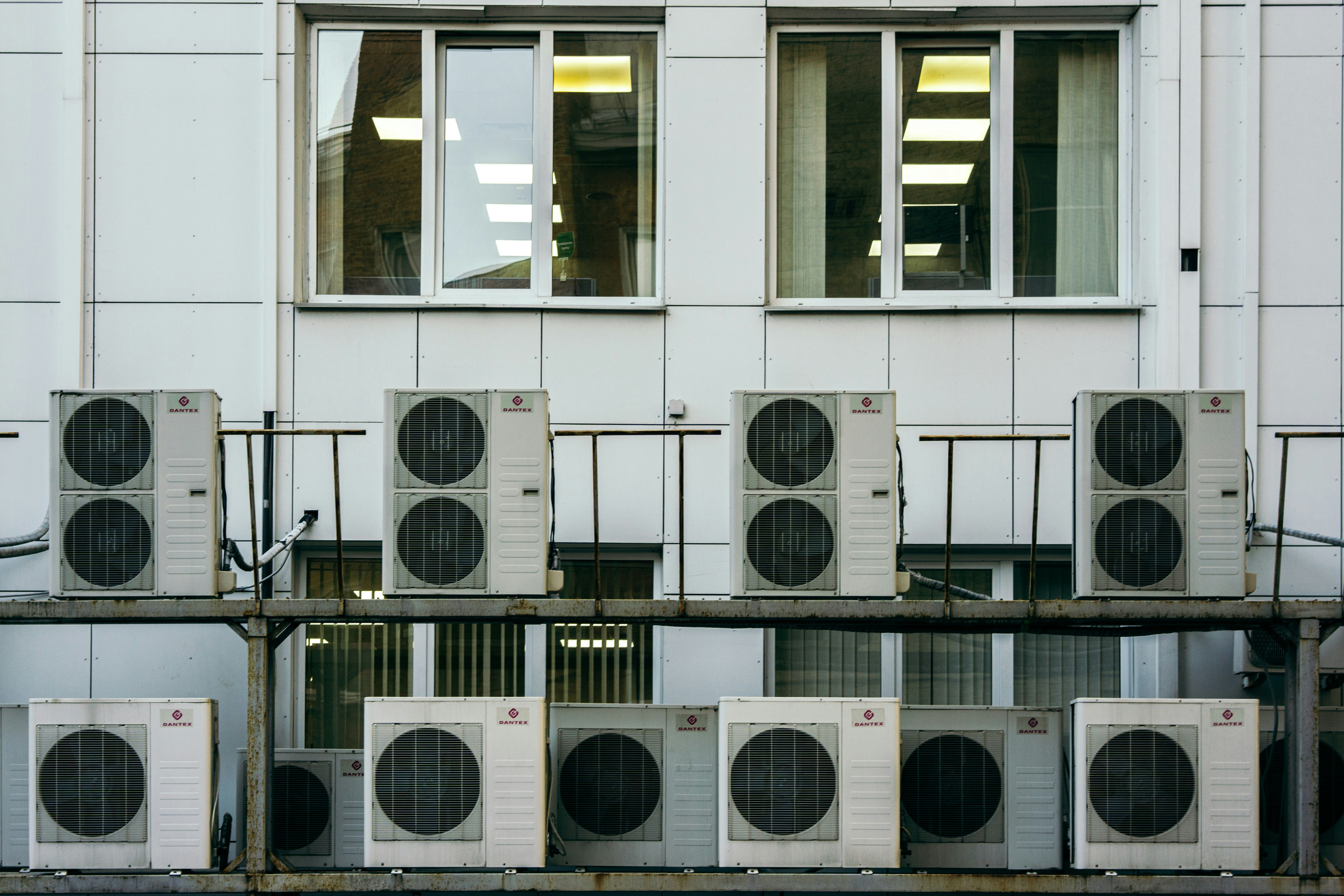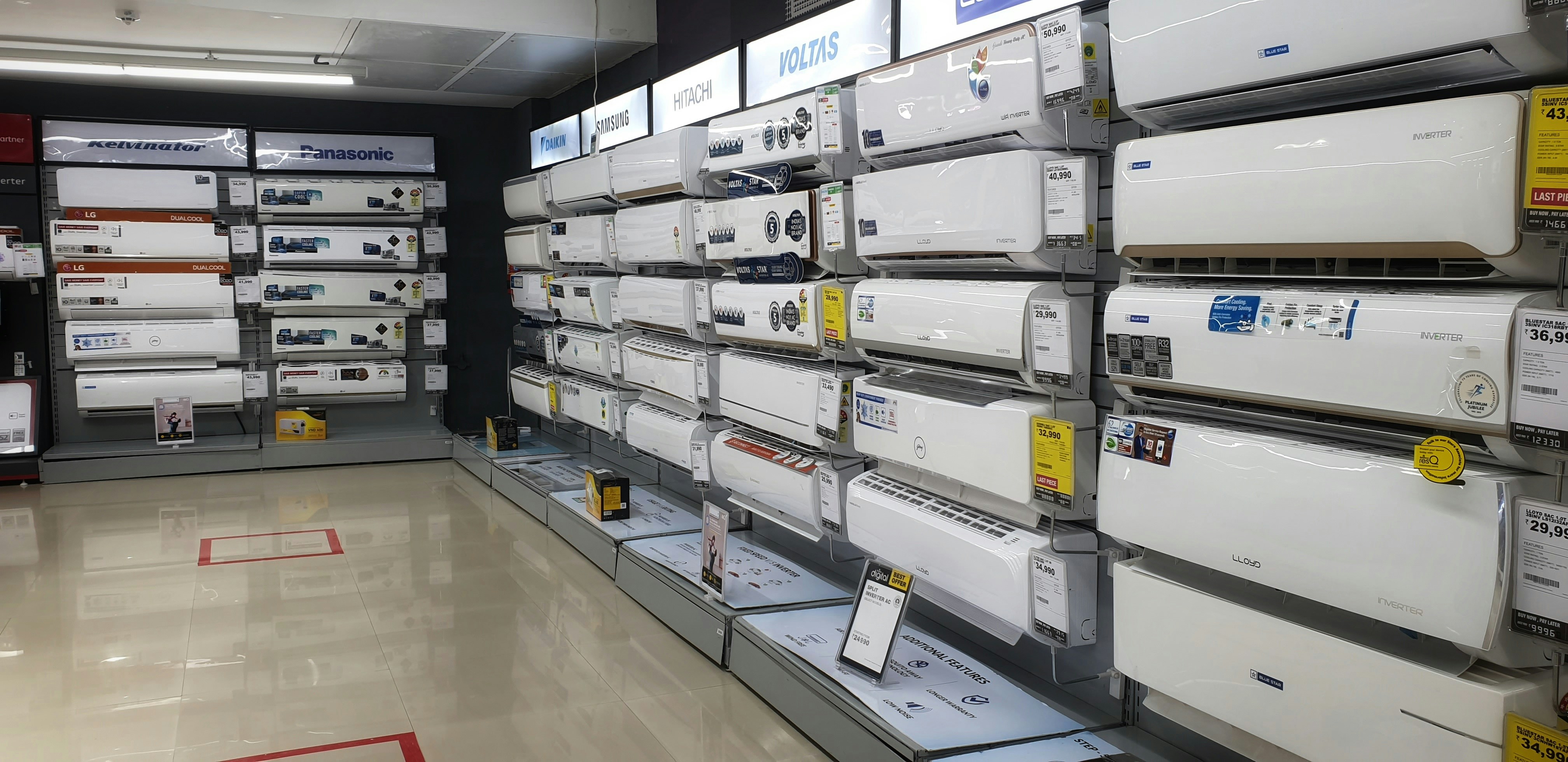Understanding the Basics of Air Conditioning
Air conditioning systems are essential for maintaining comfortable indoor environments, particularly in regions with extreme temperatures. At their core, air conditioners operate on the principles of thermodynamics, utilizing a refrigeration cycle to cool and dehumidify indoor air. This process involves several key components: the compressor, evaporator, condenser, and refrigerant, each playing a crucial role in achieving effective climate control.
The refrigeration cycle begins with the compressor, which circulates the refrigerant, a specialized fluid with a low boiling point. The refrigerant absorbs heat from the indoor air as it passes through the evaporator coil. Here, it changes from liquid to gas, effectively drawing heat out of the space. Next, the gaseous refrigerant travels to the condenser, where it releases the absorbed heat to the outdoor air. As the refrigerant cools, it reverts to liquid form and returns to the compressor, completing the cycle.
Different types of air conditioning systems cater to various needs and preferences. Central air conditioning units are typically installed in residential or commercial buildings to provide comprehensive cooling through a network of ducts. Conversely, window units are compact systems designed for single rooms, providing an affordable and efficient cooling solution. Portable air conditioners offer flexibility, allowing users to move the unit from room to room as needed, making them ideal for rental properties or temporary cooling solutions.
Understanding these fundamental principles and components of air conditioning systems facilitates informed decisions when selecting the appropriate type for specific requirements. Familiarity with the refrigeration cycle, the functions of each component, and the variety of available systems is crucial for homeowners considering an air conditioning purchase or upgrade.
Energy Efficiency and Environmental Impact
The importance of energy efficiency in air conditioning units cannot be overstated. Seasonal Energy Efficiency Ratio (SEER) ratings serve as a critical benchmark for assessing the energy performance of air conditioners. This rating reflects the cooling output during a typical cooling season divided by the energy consumed in watt-hours. Higher SEER ratings indicate better energy efficiency, meaning that the unit provides more cooling per unit of energy consumed. Consequently, selecting a unit with a higher SEER can lead to reduced energy consumption and lower electricity bills over time.
Moreover, the environmental impact of air conditioning extends beyond mere energy consumption. The generation of electricity often involves fossil fuels, which contribute to greenhouse gas emissions, exacerbating climate change. Additionally, many air conditioning systems utilize refrigerants that can deplete the ozone layer if released into the atmosphere. These refrigerants, particularly Hydrofluorocarbons (HFCs), are potent greenhouse gases, and their usage aligns with international efforts to phase out substances that damage the ozone layer or significantly contribute to global warming. Therefore, when considering air conditioning options, consumers must be aware of both the efficiency ratings and the type of refrigerants used in the system.
To choose energy-efficient air conditioners, it is advisable to look for units with a high SEER rating and those compliant with Energy Star certifications. Energy Star products are certified to meet strict energy efficiency guidelines, thereby ensuring reduced environmental impact. Additionally, regular maintenance of air conditioning units can optimize performance, further improving energy efficiency and prolonging unit life. Incorporating smart thermostats can also assist in minimizing electricity use by adjusting temperatures based on occupancy patterns. Through mindful selection and maintenance, consumers can significantly contribute to energy conservation and reduction of environmental harm associated with air conditioning systems.
Proper Maintenance for Longevity
Air conditioners are vital appliances in many households, providing comfort during hot weather. However, like any mechanical device, their effectiveness and longevity hinge on proper maintenance. Regular upkeep not only ensures optimal performance but also extends the lifespan of the unit. One of the most crucial maintenance tasks is filter replacement. Air filters trap dust, pollen, and other airborne particles that can decrease air quality and obstruct airflow if not replaced regularly. A clogged filter forces the system to work harder, leading to increased energy consumption and likely component failure.
Coil cleaning is another significant aspect of air conditioning maintenance. Over time, both the evaporator and condenser coils accumulate dirt and debris, which can hinder their ability to absorb and release heat, respectively. This reduced efficiency can result in higher energy bills and may even cause the system to overheat. Regular visual inspections to check for debris on the coils can prevent such complications, ensuring that the air conditioner operates smoothly.
In addition to self-maintenance tasks, scheduling professional servicing at least once a year can further enhance the unit’s efficiency and functionality. Trained technicians can conduct comprehensive inspections, identifying potential problems before they escalate into costly repairs. They can also address issues such as refrigerant leaks, electrical faults, and mechanical wear, which are often not visible during casual checks. Recognizing warning signs such as unusual noises, reduced cooling, or increased humidity levels can prompt timely maintenance and save homeowners from unexpected breakdowns.
Neglecting these essential maintenance tasks can lead to common issues, such as increased energy bills, diminished cooling capacity, or complete system failure. By prioritizing maintenance, homeowners can enjoy a reliable, energy-efficient air conditioning system for many years.
Innovations and Future Trends in Air Conditioning
The air conditioning industry has witnessed transformative innovations that are not only enhancing user comfort but also prioritizing energy efficiency and sustainability. In recent years, one of the most significant advancements has been the integration of smart technology in air conditioning systems. Smart AC units are now capable of connecting with home automation setups, allowing users to control temperature settings, humidity levels, and even energy consumption remotely via smartphone applications. This integration not only provides convenience but also optimizes energy usage, leading to additional savings on utility bills.
Moreover, the focus on eco-friendly refrigerants is becoming increasingly prominent within the industry. Traditional refrigerants such as HFCs are being phased out due to their high global warming potential. In their place, manufacturers are adopting natural refrigerants like hydrocarbons, ammonia, and CO2, which have a significantly lower impact on the environment. These alternative refrigerants not only enhance the sustainability of air conditioning systems but also meet stringent regulatory requirements.
Energy efficiency technologies are evolving at a rapid pace as well. Innovations such as variable-speed compressors and advanced inverter technology allow air conditioners to adjust their cooling output to match the precise needs of a space. This results in less energy consumption while maintaining optimal comfort levels. Additionally, advancements in insulation materials and smart thermostats contribute to enhanced energy conservation.
As air conditioning technology continues to develop, consumers can expect more integrated solutions that prioritize comfort, efficiency, and sustainability. Future trends hint at the potential for even more breakthroughs, including improved air quality systems and further integration of artificial intelligence for personalized climate control. Such innovations not only reflect a commitment to consumer satisfaction but also address global energy challenges, making air conditioning more sustainable for future generations.

